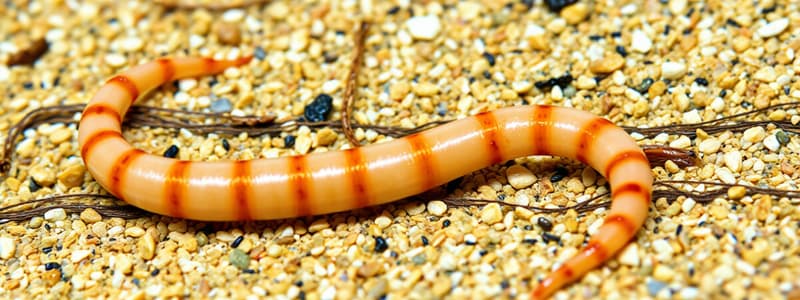Podcast
Questions and Answers
What is the purpose of the text provided?
What is the purpose of the text provided?
- To describe the physical characteristics of a flashcard
- To provide instructions for using flashcards (correct)
- To explain the benefits of using flashcards
- To show an example of a completed flashcard
What is the significance of the 'Card number' section on the back side of the cards?
What is the significance of the 'Card number' section on the back side of the cards?
- It indicates the difficulty level of the question on the card
- It is simply used for aesthetics and has no practical purpose
- It provides a space for recording the date the card was reviewed
- It allows for easier sorting and organization of the cards (correct)
Based on the text, what is the most likely audience for these instructions?
Based on the text, what is the most likely audience for these instructions?
- Professional educators
- Graphic designers creating educational materials
- Researchers conducting experiments
- Students preparing for exams (correct)
What is a possible advantage of using flashcards for learning?
What is a possible advantage of using flashcards for learning?
How does the provided text differ from a typical flashcard?
How does the provided text differ from a typical flashcard?
Flashcards
Flashcard Basics
Flashcard Basics
A tool for studying that combines questions and answers.
Front Side
Front Side
The part of a flashcard that contains the question or prompt.
Back Side
Back Side
The part of a flashcard that holds the answer to the question on the front side.
Card Number
Card Number
Signup and view all the flashcards
Question and Answer Format
Question and Answer Format
Signup and view all the flashcards
Study Notes
Annelida Phylum
- Polychaeta (Marine Worms):
- Characterized by parapodia (paired appendages) with many setae (bristles)
- Have eyes and sensory tentacles on their head
- Some are active predators, others filter feeders
- Feeding includes predation, scavenging, suspension feeding, and deposit feeding
- Some build protective tubes of sand grains, mud, or calcium carbonate
- Oligochaeta (Earthworms):
- Lack parapodia, have fewer setae along their body
- Lack eyes and tentacles
- Mostly terrestrial or freshwater
- Move by peristaltic waves (muscle contractions)
- Hermaphroditic (both male and female reproductive organs in one worm)
- Fertilization is external; cocoons are formed
- Importance: improve soil aeration and nutrient mixing
- Hirudinea (Leeches):
- Lack parapodia and setae
- Possess a posterior sucker for attachment
- Mostly ectoparasites, feeding on the blood of vertebrates or invertebrates
- Secrete anticoagulants during feeding
- Some species possess toothed jaws for incisions
- Move by attaching and detaching their suckers
- Hermaphroditic with internal fertilization
- Importance: used in medicine to improve blood flow and remove clots
General Annelida Characteristics
- Body Structure: Segmented worms with a series of repeating segments (metamerism)
- Body Wall: Flexible body wall with a protective cuticle; allows for locomotion and gas exchange
- Respiration: Gas exchange across a thin body wall
- Excretion: Waste removal via nephridia (kidney-like structures)
- Locomotion: Peristaltic waves for crawling and burrowing; some have parapodia for swimming.
Studying That Suits You
Use AI to generate personalized quizzes and flashcards to suit your learning preferences.




